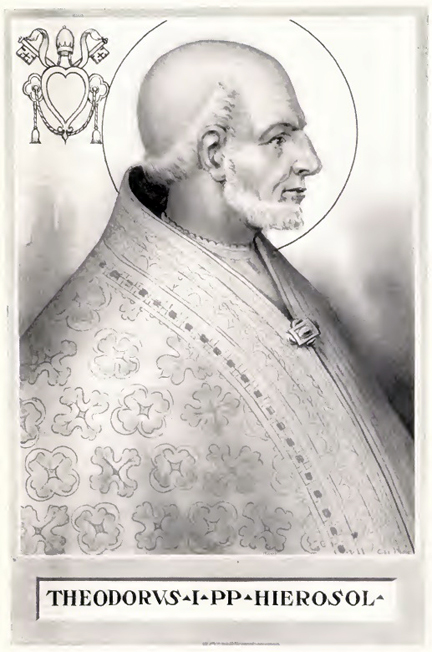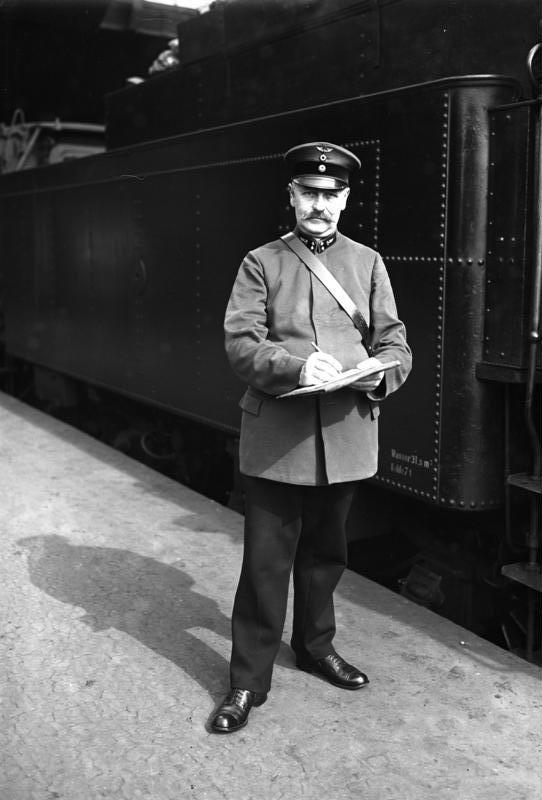|
Münchberg–Selbitz Railway
The Münchberg–Selbitz railway is a branch line in Bavaria in southern Germany. It runs from Münchberg via Helmbrechts to Selbitz. The Helmbrechts–Selbitz section has been since closed and dismantled. Passenger trains still run today between Münchberg and Helmbrechts. History The Münchberg–Helmbrechts railway was built by the Royal Bavarian State Railways and opened on 1 June 1887. Its extension to Selbitz was completed by the Deutsche Reichsbahn and services began on 1 March 1924. As a result of falling numbers, passenger services were withdrawn from the Helmbrechts–Selbitz section on 30 May 1975 by the Deutsche Bahn and the line from Selbitz to Schauenstein was lifted in June 1977. Goods traffic continued to work the remaining stretch from Helmbrechts to Schauenstein until 31 March 1987 whilst the section beyond it was dismantled. Services '' Regionalbahn'' trains on the present-day timetable route no. 853 are operated by the '' Vogtlandbahn ... [...More Info...] [...Related Items...] OR: [Wikipedia] [Google] [Baidu] |
Hof Hauptbahnhof
Hof Hauptbahnhof (German language, German for ''Hof main station''; sometimes translated as "Hof Central Station" or described as "Hof central station" in English) is the main railway station in Hof, Germany, Hof in southern Germany and is situated at the intersection of the Saxon-Franconian trunk line (''Magistrale'') and the Munich–Regensburg–Leipzig–Berlin line. When it was opened it formed the boundary between the former Bavarian Ludwig South-North Railway Lindau (Bodensee), Lindau–Hof, Germany, Hof to the Saxon-Bavarian Railway on the Saxon side from Hof–Leipzig. Today the Deutsche Bahn has classified Hof Hauptbahnhof as German railway station categories, category 3 – a regional hub/long-distance stop. Lines and services The Weiden–Oberkotzau railway, Regensburg–Hof, Bamberg–Hof railway, Bamberg–Hof and Saxon-Bavarian Railway, Leipzig–Hof main lines all meet at Hof Hauptbahnhof, as does the Hof–Bad Steben railway, Hof–Bad Steben branch line. His ... [...More Info...] [...Related Items...] OR: [Wikipedia] [Google] [Baidu] |
Royal Bavarian State Railways
The Royal Bavarian State Railways (''Königliche Bayerische Staats-Eisenbahnen'' or ''K.Bay.Sts.B.'') was the state railway company for the Kingdom of Bavaria. It was founded in 1844. The organisation grew into the second largest of the German state railways (after that of the Prussian state railways) with a railway network of 8,526 kilometres (including the Palatinate Railway or ''Pfalzbahn'') by the end of the First World War. Following the abdication of the Bavarian monarchy at the end of the First World War, the 'Royal' title was dropped and on 24 April 1920 the Bavarian State Railway (''Bayerische Staatseisenbahn''), as it was now called, was merged into the newly formed German Reich Railways Authority or Deutsche Reichseisenbahnen as the Bavarian Group Administration (''Gruppenverwaltung Bayern''). The management of the Bavarian railway network was divided into four Reichsbahn divisions: Augsburg, Munich, Nuremberg and Regensburg. The former Palatinate Railway formed the ... [...More Info...] [...Related Items...] OR: [Wikipedia] [Google] [Baidu] |
Bavarian Branch Lines
Bavarian branch lines comprised nearly half the total railway network in Bavaria, a state in the southeastern Germany that was a kingdom in the days of the German Empire. The construction era for branch lines lasted from 1872, when the first route, from Siegelsdorf to Langenzenn, was opened, to 1930, when the last section of the branch from Gößweinstein to Behringersmühle went operational. History The first German railway line was opened in Bavaria in 1835. This was the '' Ludwigsbahn'' (Ludwig's Railway) from Nuremberg to Fürth which opened on 7 December 1835. This was the start of a railway building frenzy, which rapidly spread across the state. The second Bavarian railway line, from Munich to Augsburg, soon followed. The early railways were private lines, but from 184?, the Bavarian state oversaw the construction of railways, through its state-owned railway company, the Royal Bavarian State Railways. The most important routes were established first, of course, and becam ... [...More Info...] [...Related Items...] OR: [Wikipedia] [Google] [Baidu] |
Bayerische Eisenbahngesellschaft
Bayerische Eisenbahngesellschaft (BEG; German for ''Bavarian Railways Company'') is the passenger transport company for regional railways in Bavaria. Founded in 1995, it is organised as a GmbH wholly owned by the Bavarian Government. The company does not provide any services or own tracks or rolling stock. Instead, it purchases services from railway companies that actually operate the trains. History In 1995, when the ''Act on the Regionalisation of Public Local Passenger Transport'' (''Gesetz zur Regionalisierung des öffentlichen Personennahverkehrs'') transferred the responsibility for local passenger transport from the federal government to the ''Länder'', the Bavarian Ministry of Economy, Infrastructure, Traffic and Technology founded the Bayerische Eisenbahngesellschaft to organise the local passenger rail transport in Bavaria. Owing to the market situation at that time, in 1996 it awarded the contract for most of the network to Deutsche Bahn, the national rail company ... [...More Info...] [...Related Items...] OR: [Wikipedia] [Google] [Baidu] |
RegioSprinter
The RegioSprinter is a German diesel railcar built by Siemens-Duewag for rapid regional railway services. Originally the RegioSprinter was designated as a Regional Combustion-engined Railbus (''Regional-Verbrennungstriebwagen'' or ''RVT'') by Duewag. Developed as prototypes for fast regional railway services on the plains, the RegioSprinter still has the fastest acceleration of any multiple unit or railbus in Germany. Due to several technical and conceptual defects, however, only very few were built. Based on their experience with the Regiosprinter Siemens developed its successor, the Desiro, which was initially marketed as the ''Regiosprinter 2''. In 1999, all the Vogtlandbahn vehicles were converted to meet tramway regulations (''BO Strab''), in order to be able to transfer to a tram line in the centre of Zwickau. Design The vehicles are designed with three sections. In the two, single-axled end modules are the driver's cabs and the drive units like those on trams. In the mi ... [...More Info...] [...Related Items...] OR: [Wikipedia] [Google] [Baidu] |
DBAG Class 642
__NOTOC__ Year 642 ( DCXLII) was a common year starting on Tuesday (link will display the full calendar) of the Julian calendar. The denomination 642 for this year has been used since the early medieval period, when the Anno Domini calendar era became the prevalent method in Europe for naming years. Events By place Byzantine Empire * Emperor Constans II marries Fausta. Europe * April 30 – Chindasuinth, a Gothic warlord (already 79 years old), commences a rebellion and deposes King Tulga in Toledo, Spain. He is proclaimed king by the Visigothic nobility and anointed by the bishops. Tulga is tonsured and sent out to live his days in a monastery. * Radulf, a Frankish aristocrat, revolts against King Sigebert III of Austrasia and defeats his army, taking the title of ''rex'' or king of Thuringia. Britain * August 5 – Battle of Maserfield: King Penda of Mercia defeats and kills King Oswald of Northumbria, age 38, at Oswestry (West Midlands). He comm ... [...More Info...] [...Related Items...] OR: [Wikipedia] [Google] [Baidu] |
Deutsche Bahn
The (; abbreviated as DB or DB AG) is the national railway company of Germany. Headquartered in the Bahntower in Berlin, it is a joint-stock company ( AG). The Federal Republic of Germany is its single shareholder. describes itself as the second-largest transport company in the world, after the German postal and logistics company / DHL, and is the largest railway operator and infrastructure owner in Europe. Deutsche Bahn was the largest railway company in the world by revenue in 2015; in 2019, DB Passenger transport companies carried around 4.8 billion passengers, and DB logistics companies transported approximately 232 million tons of goods in rail freight transport. The group is divided into several companies, including ''DB Fernverkehr'' (long-distance passenger), '' DB Regio'' (local passenger services) and ''DB Cargo'' (rail freight). The Group subsidiary ''DB Netz'' also operates large parts of the German railway infrastructure, making it the largest rail network in ... [...More Info...] [...Related Items...] OR: [Wikipedia] [Google] [Baidu] |
Deutsche Reichsbahn
The ''Deutsche Reichsbahn'', also known as the German National Railway, the German State Railway, German Reich Railway, and the German Imperial Railway, was the German national railway system created after the end of World War I from the regional railways of the individual states of the German Empire. The ''Deutsche Reichsbahn'' has been described as "the largest enterprise in the capitalist world in the years between 1920 and 1932"; nevertheless its importance "arises primarily from the fact that the Reichsbahn was at the center of events in a period of great turmoil in German history". Overview The company was founded on 1 April 1920 as the ("German Imperial Railways") when the Weimar Republic, which still used the nation-state term of the previous monarchy, (German Reich, hence the usage of the in the name of the railway; the monarchical term was ), took national control of the German railways, which had previously been run by the German states. In 1924 it was reorganise ... [...More Info...] [...Related Items...] OR: [Wikipedia] [Google] [Baidu] |
Bavaria
Bavaria ( ; ), officially the Free State of Bavaria (german: Freistaat Bayern, link=no ), is a state in the south-east of Germany. With an area of , Bavaria is the largest German state by land area, comprising roughly a fifth of the total land area of Germany. With over 13 million inhabitants, it is second in population only to North Rhine-Westphalia, but due to its large size its population density is below the German average. Bavaria's main cities are Munich (its capital and largest city and also the third largest city in Germany), Nuremberg, and Augsburg. The history of Bavaria includes its earliest settlement by Iron Age Celtic tribes, followed by the conquests of the Roman Empire in the 1st century BC, when the territory was incorporated into the provinces of Raetia and Noricum. It became the Duchy of Bavaria (a stem duchy) in the 6th century AD following the collapse of the Western Roman Empire. It was later incorporated into the Holy Roman Empire, became an ind ... [...More Info...] [...Related Items...] OR: [Wikipedia] [Google] [Baidu] |
Bamberg–Hof Railway
The Bamberg–Hof railway is a 127 kilometre-long main line that runs through Bavaria in southern Germany. The line runs from Bamberg via Lichtenfels, Kulmbach, Neuenmarkt- Wirsberg and Münchberg to Hof. The section from Hof to Neuenmarkt now forms part of the Saxon-Franconian trunk line. History The line is part of the Ludwig South-North Railway from Lindau to Hof. It was built in 3 stages between 1846 and 1848 by the Royal Bavarian State Railways. Its expansion into a double-tracked railway followed in 1891 and the line was electrified from Bamberg to Lichtenfels and beyond that via the Franconian Forest Railway to Saalfeld on 10 May 1939. In the 1960s the second track was lifted between Marktschorgast and Stammbach due to the lack of traffic. Opening dates * 15 February 1846: Bamberg–Lichtenfels * 15 October 1846: Lichtenfels–Neuenmarkt-Wirsberg * 1 November 1848: Neuenmarkt-Wirsberg–Hof Description of the route Shortly after the route leaves Bamberg station the b ... [...More Info...] [...Related Items...] OR: [Wikipedia] [Google] [Baidu] |



